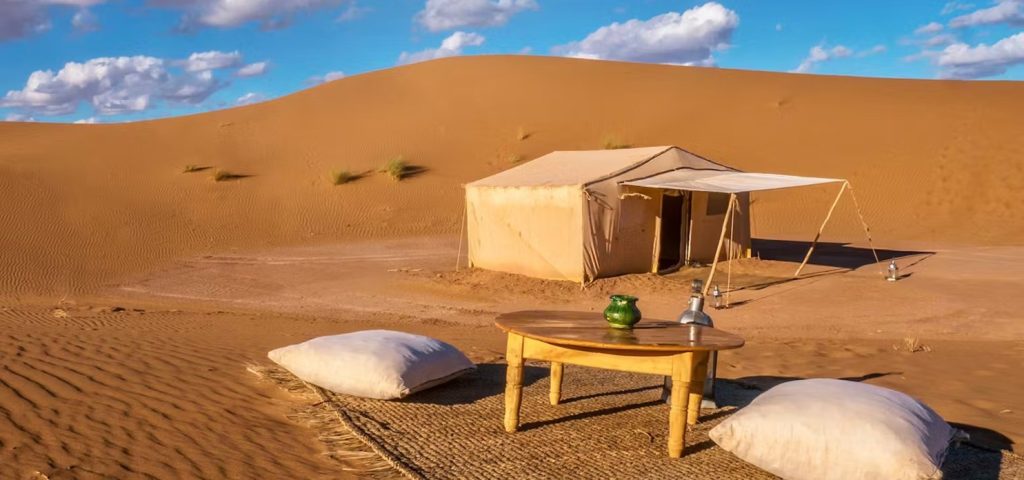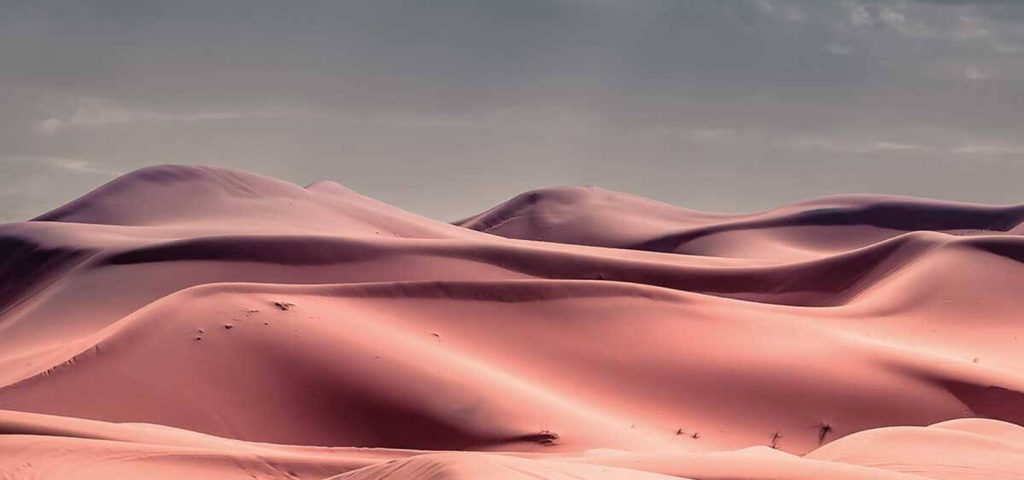Morocco is often referred to as the “Garden of Africa,” and it’s easy to see why. With its vibrant and colorful attractions, it’s no wonder that many people are drawn to travel to Morocco. I’ll be sharing some essential information about traveling to Morocco, including where it is located and introducing you to six of Morocco’s must-visit attractions, including Fes, Marrakech, the Sahara Desert, Chefchaouen, and Meknes.
Where is Morocco?
Morocco is located in North Africa, situated between the Mediterranean Sea and the Atlantic Ocean, just across from Spain. The country boasts diverse landscapes, from majestic mountains to vast deserts and stunning coastlines.
Top 5 Attractions in Morocco
Morocco is home to several captivating attractions, including the four imperial cities of Rabat, Meknes, Marrakech, and the ancient city of Fes. Additionally, the Sahara Desert and Chefchaouen are bursting with color and are well worth a visit.
1. Fes
Fes, with its rich history and vibrant culture, is a true gem nestled in the heart of Morocco. As one of the oldest cities in the country, Fes boasts a fascinating tapestry of architectural wonders, cultural landmarks, and bustling souks that have stood the test of time.
Exploring the Medina: A Journey Through Time
At the heart of Fes lies its ancient Medina, a labyrinth of narrow streets and winding alleyways that seem to transport visitors back in time. Designated as a UNESCO World Heritage Site, the Medina is a living testament to centuries of history and tradition. With over 9,000 intricately woven streets, getting lost in its maze-like corridors is all part of the adventure.
As you wander through the Medina, you’ll be greeted by a kaleidoscope of sights, sounds, and smells. Exquisite palaces adorned with intricate tile work, ancient mosques echoing with the call to prayer, and bustling markets overflowing with spices, textiles, and handicrafts—all await your discovery.
The Art of Craftsmanship: Leather Tanneries and Beyond
One of the highlights of any visit to Fes is exploring its renowned leather tanneries, where traditional craftsmanship has been preserved for generations. These tanneries, some of which date back over a thousand years, offer a glimpse into the ancient art of leather production.
As you approach the tanneries, the pungent smell of dye and leather fills the air, mingling with the vibrant colors of the dyeing vats below. Workers can be seen waist-deep in the dyeing pits, methodically tanning and dyeing the leather using age-old techniques passed down through the ages.
But Fes is not just about leather. The city is also a hub of artistic expression, with local artisans practicing a wide range of crafts, from intricate tile work to delicate pottery. Wander through the narrow streets of the Medina, and you’ll stumble upon workshops where skilled craftsmen and women ply their trade, creating masterpieces that are as beautiful as they are timeless.
Shopping in Fes: A Bargain Hunter’s Paradise
No visit to Fes would be complete without indulging in a bit of shopping, and the city offers plenty of opportunities to flex your bargaining skills. From the bustling souks of the Medina to the chic boutiques of the Ville Nouvelle, there’s something for everyone in Fes.
If you’re in the market for leather goods, be sure to visit the tanneries and haggle for a bargain. Whether it’s a handcrafted leather bag, a pair of intricately embroidered slippers, or a traditional Moroccan pouf, you’re sure to find a treasure to take home with you.
But the shopping doesn’t stop there. Fes is also known for its exquisite textiles, vibrant ceramics, and dazzling jewelry, all of which make for perfect souvenirs or gifts for loved ones back home. So go ahead, unleash your inner bargain hunter and explore all that Fes has to offer. Who knows what treasures you’ll uncover along the way?

2. Marrakech
Jemaa el-Fnaa: A Feast for the Senses
Kickstart your Marrakech adventure at the iconic Jemaa el-Fnaa square, a UNESCO World Heritage Site and the beating heart of the city. By day, this bustling square is a hive of activity, with snake charmers, storytellers, and street performers vying for your attention. But it’s at night when Jemaa el-Fnaa truly comes alive, transforming into a mesmerizing spectacle of lights, music, and mouthwatering aromas as food stalls spring to life, offering an array of tantalizing Moroccan delicacies.
Bahia Palace: A Glimpse into Royalty
Step back in time as you wander through the opulent halls of the Bahia Palace, a stunning example of Moroccan architecture and design. Built in the late 19th century, this palace served as the residence of the Grand Vizier’s harem and is renowned for its exquisite tile work, intricate wood carvings, and tranquil gardens. As you explore its labyrinthine corridors and ornate courtyards, you can’t help but imagine the lavish lifestyles of Morocco’s past rulers.
Majorelle Garden: A Botanical Oasis
Escape the hustle and bustle of the city and find solace in the serene surroundings of the Majorelle Garden. Originally created by French painter Jacques Majorelle in the 1920s, this lush botanical oasis is a sanctuary of calm amidst the chaos of Marrakech. Stroll along shaded pathways lined with exotic plants, towering palms, and vibrant flowers, and marvel at the striking cobalt blue buildings that dot the landscape. Don’t forget to visit the on-site Berber Museum and the Yves Saint Laurent Memorial, paying homage to the fashion legend who fell in love with Marrakech and made it his home.
Souks and Shopping: A Retail Adventure
No visit to Marrakech would be complete without a shopping spree in its legendary souks, where a treasure trove of goods awaits eager shoppers. Lose yourself in the labyrinthine alleyways of the Medina, where you’ll find everything from intricately woven carpets and handcrafted leather goods to sparkling jewelry and aromatic spices. Don’t be afraid to haggle with the local merchants – it’s all part of the experience!
3. Sahara Desert
Camel Treks: A Desert Adventure
No trip to the Sahara Desert would be complete without experiencing the classic camel trek across its mesmerizing terrain. Mount your trusty dromedary and let it lead you on a magical journey through towering sand dunes and vast expanses of desert wilderness. Feel the rhythm of the camel’s gait as you sway gently with each step, soaking in the awe-inspiring vistas that unfold before you. Whether it’s a short jaunt or an overnight excursion, a camel trek is sure to be a highlight of your desert adventure.

Sunrise and Sunset: Nature’s Masterpieces
Prepare to be awestruck by the breathtaking beauty of the Sahara’s sunrise and sunset – two moments that paint the sky with a kaleidoscope of colors, casting a spell of enchantment over the desert landscape. Rise early to witness the first light of dawn as it bathes the dunes in a soft golden glow, illuminating the desert with a sense of serenity and renewal. And as evening falls, find a quiet spot amidst the dunes to witness the spectacle of the sunset, as the sun dips below the horizon, setting the sky ablaze with fiery hues of orange and crimson. These fleeting moments are truly nature’s masterpieces, etched in the memory forever.
Desert Camping: Sleeping Under the Stars
For a truly immersive desert experience, spend a night under the vast expanse of the Sahara’s star-studded sky. Settle into a traditional Berber camp nestled amidst the dunes, where cozy tents and warm hospitality await. As night falls, gather around a crackling campfire and indulge in a hearty Moroccan feast, serenaded by the haunting melodies of local musicians. And when the time comes to retire for the night, drift off to sleep under a blanket of stars, lulled by the gentle rustle of the desert breeze. It’s an experience that will leave you feeling connected to the ancient rhythms of the desert and the infinite beauty of the cosmos.
Berber Culture: A Window into Tradition
To gain insight into the rich cultural heritage of the Sahara, consider visiting a Berber camp in North Africa. The Berbers are one of the oldest ethnic groups in North Africa, with a proud history and unique traditions that have been passed down through generations. Immerse yourself in their world as you don traditional Berber attire, adorned with vibrant colors and intricate patterns, and learn about their nomadic way of life, steeped in a deep reverence for the land and its rhythms. Engage in lively conversations with local Berbers, savoring the opportunity to exchange stories and perspectives, and gain a newfound appreciation for the enduring spirit of this remarkable desert culture.
4. Chefchaouen
Chefchaouen, known as the “Blue Pearl” of Morocco, is located between the Roman ruins and the mountains in northern Morocco. Chefchaouen is famous for its blue-washed houses and charming streets, making it a picturesque destination with photo opportunities at every turn. Visitors can stroll through the streets of Chefchaouen, visit local art studios, and soak in the laid-back atmosphere of this exotic city.
5. Meknes
Meknes was designated as a UNESCO World Heritage Site in 1996 and is the youngest of Morocco’s four imperial cities. Before its decline, Meknes was chosen by Ismail Ibn Sharif as the capital of his kingdom. Legend has it that Ismail had 500 concubines and hundreds of children, rivaling France’s Louis XIV. He invested heavily in building walls, fortifications, and exquisite palaces, earning Meknes the nickname “Moroccan Versailles.”
From the historic streets of Fes to the vibrant markets of Marrakech and the tranquil blue lanes of Chefchaouen, Morocco is a country that promises unforgettable experiences at every turn. Exploring the beautiful landscapes of Morocco often brings back memories of the enchanting sights I experienced in Seville. Whether you’re exploring ancient cities, riding camels in the desert, or marveling at the grandeur of imperial palaces, Morocco offers something for every traveler to enjoy.
